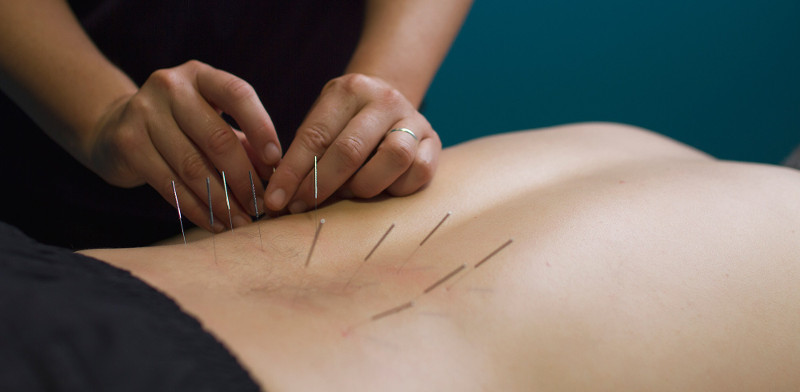A tiny needle or acupuncture needle is introduced through the skin and into the muscle during a trigger-point dry-needling session.
Myofascial trigger points (MTP) are the intended target; MTPs are hyperirritable foci in skeletal muscle that are accompanied by a hypersensitive palpable nodule in a taut band.
Dry needling of trigger points may be done on the skin or deeper in the tissue, depending on the condition being treated. In this article, we will explain everything you need to know about Functional Dry Needling in Aurora.
What is Functional Dry Needling?
Functional dry needling is a method used by physical therapists and other medical professionals to alleviate pain and restore mobility related to the musculoskeletal system.
The majority of the time, it is used in conjunction with other methods of pain relief, such as physical therapy. Myofascial trigger points may be relieved by inserting thin, pointed needles into the skin.
The prefix “myo” in the term “myofascial” refers to muscle. The white, fibrous connective tissue that wraps your muscles is called fascia.
Myofascial trigger points are localized sore spots that form in your muscles. Touching one of these “trigger spots” may cause immediate and severe pain. A trigger point may be geographically close to the site of your discomfort.
Nonetheless, they often trigger referred pain. When pain travels to another area of the body, we say that it is referred to.
Click here – Managing Claims for Reduced Compensation
Needles are used by physical therapists to relieve trigger points. Dry needling, also known as acupressure, is a technique used to treat pain by inserting very thin needles into the skin. The providers only use solid needles, which are not contaminated in any way.
This is why the method is referred to as a “dry” one. You won’t be injecting anything into your system. An injection into a trigger point is unique. They are medical procedures that involve the administration of medication.
Dry needling is also known as trigger point dry needling and intramuscular stimulation.
Deep vs. Superficial Dry Needling
The advantages of superficial dry needling, which only requires a needle to be inserted up to 10 mm into the subcutaneous tissue, include its simplicity, the low risk of significant tissue trauma, the absence of risk for nerve and visceral injury, and the patient’s comfort.
When treating myofascial trigger points with dry needling, it is common to insert the needle through the skin and into the muscle.
Which Needles Are Used?
In dry needling, the needle is extremely fine and slender. Myofascial trigger points, as well as the underlying muscular and connective tissues, are stimulated when the needle is inserted superficially into the skin.
A physical therapist can reach tissues that are out of their reach by using a needle. While doing dry needling, a physical therapist will always take precautions by using gloves and other safety gear. A medical sharps collector is used to dispose of the used sterile needles.
If you want to get more information about the treatment, you can contact Physical Therapy Advantage in the Aurora clinic.
How does FDN function?
When you have tight muscles due to an injury, degenerative diseases, or persistent discomfort, functional discharge neurostimulation may help. Compression and irritation of the nerves leaving the spine result from muscle stiffness and spasms.
Muscles attached to inflamed nerves spasm in response. Conditions including tendinitis, osteoarthritis, immobility, and persistent pain may develop at the extremities as a result.
Needles of very tiny gauges are placed into the muscles at the trigger sites responsible for the referred pain.
In response, the muscle reflexively contracts and relaxes, increasing muscular flexibility and alleviating the resulting discomfort. By the use of dry needling, these trigger sites are treated, allowing the muscle to repair.
We recommend you to contact Physical Therapy Advantage, if you want Physical Therapy in North Aurora.
Is dry needling painful?
Touching a trigger point almost always causes intense discomfort. As a result, you can feel discomfort as your healthcare expert assesses the area for trigger points.
It’s possible that the needling itself may cause you some pain. People may or may not feel a prick from a needle, depending on how sensitive their skin is. The trigger point is a painful area where the needle may elicit a twitch reaction.
The area around the incision may feel stiff or uncomfortable afterward, but continuing to move and stretch it can help.
Functional dry needling is used to treat a wide variety of conditions.
- Pain in the back and the sciatic nerve
- Discomfort in the neck
- Elbow pain is often known as tennis elbow
- Tendinitis of the shoulder or rotator cuff
- Headaches
- Tendonitis of the Achilles
- Plantar fasciitis
- Inflammation of the hip joint
- Syndromes of myofascial pain
Typical FDN treatment: what to expect?
Most people won’t feel the needle go in, but others may feel some pain as it moves further into the muscle.
The insertion of the needle into a healthy muscle causes little pain, but if the muscle is sensitive, short, or includes active trigger points, the client may experience a feeling similar to a muscle cramp.
The muscle being worked on may have a recurrence of symptoms due to FDN, or the symptoms may be a referral from somewhere else. One of the defining characteristics of trigger points is the experience of transferred pain.
Click here – What Is Loss Of Consortium?
Conclusion
While additional study is required, there is evidence that suggests dry needling may be effective as a pain therapy. You also shouldn’t assume that dry needling would completely eliminate your discomfort.
For optimal outcomes, dry needling is often combined with other therapies. When deciding whether to see an acupuncturist or a physical therapist for dry needling, it is important to research the laws in your state and assess your own level of comfort with the procedure.
